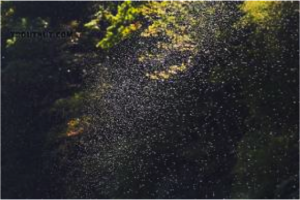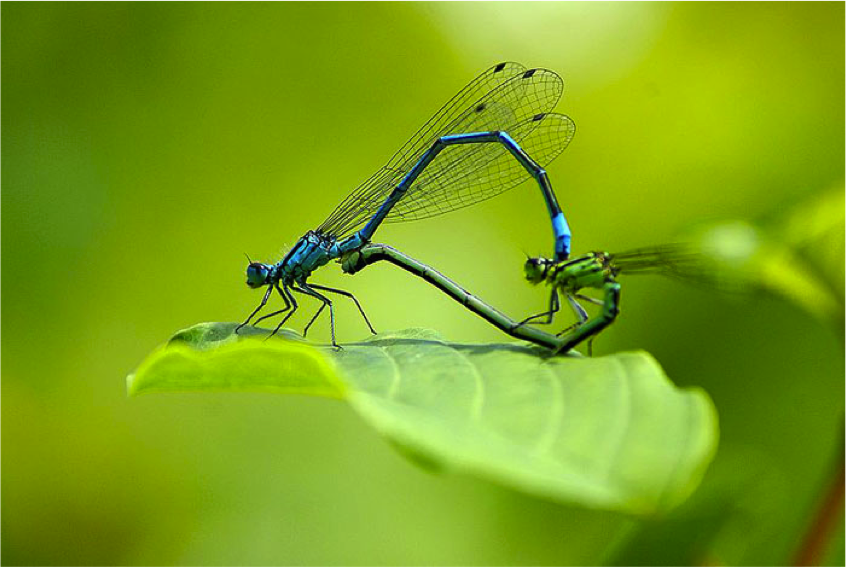Courtship & Mating
Courtship behaviors are used to bring the sexes together for mating. Insects have such a wide variety of courtship and mating behaviors that it would be impossible to cover all of them, so we will highlight some interesting cases.
Sound is often used to bring male and female adults together. Male crickets sing songs to attract females and male mosquitoes are attracted to females by the sound of their wings.
In a really good example, stonefly males “call” females by drumming, or tapping the tip of the abdomen on a hard surface. In this process the males call with species-specific drumming patterns for the females and the females reply. The process continues until the male finds the female. While only unmated females will drum, males will continue to drum even after mating. You can hear drumming stoneflies at this site from the University of North Texas.
Insects also can use pheromones to attract mates. Typically the female releases the volatile chemicals into the air and the chemicals attract males. Pheromones can be quite powerful and many moths and butterflies can detect a potential mate from as far away as 10 km (6.2 mi).
The chemical composition of the pheromones are known for some species and are actually used in biocontrol. For example, the expansion of the range of the gypsy moth is monitored by the use of sticky traps baited with sex attractant. Males are extremely sensitive to the sex attractant and the presence of the gypsy moth in an area is indicated when males are caught in the traps.
Groups of individuals can often attract mates. For example, in the mayflies males form swarms often over the water. The swarms appear to be bobbing up and down in the air. Females are attracted to the swarms. When a female approaches the swarm, she is grabbed by a male and the two fall to the ground where they mate. After mating, the pair fly off separately, with males returning to the swarm to mate again. Swarming males are not very selective and have been seen trying to mate with other flying insects.
Dragonflies and damselflies are large, colorful insects that are often found around ponds and streams. While the courtship and mating of dragonflies and damselflies differs for each species, generalizations can be made.
Some dragonflies and damselflies mate while in flight, and some mate while standing on a perch such as a cattail or reed. The male grasps the female by the back of the thorax or head, and the female responds by swinging her abdomen vertically until the genitalia have met and the transfer of sperm takes place.
Copulating dragonflies and damselflies can often be observed flying during mating, or perched in tandem. After mating, the male may attempt to guard her to keep other males from mating with her, either by remaining in contact with her or hovering close by.

